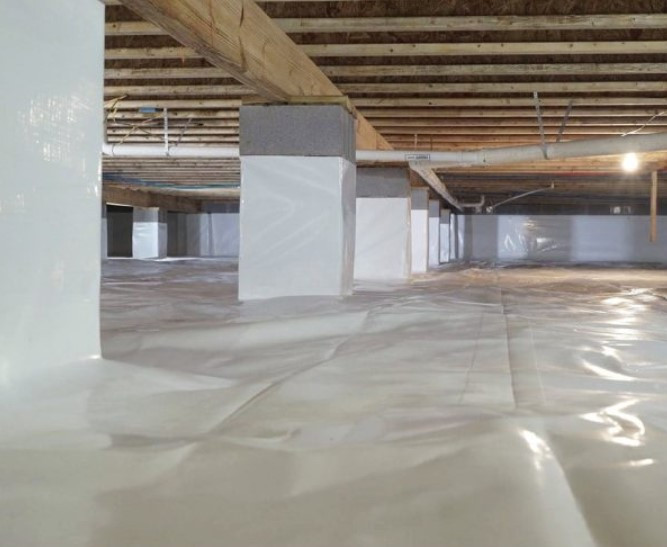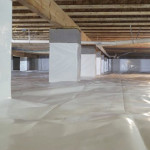Basements play a vital role in many homes, serving as extra storage, recreational areas, or even additional living space. However, their below-ground position makes them particularly vulnerable to moisture and flooding. Ensuring your crawlspace is waterproofed is a crucial step in protecting your basement and, by extension, your entire home. This article will explore why crawlspace waterproofing is essential, the techniques involved, and the long-term advantages it provides.
Recognizing the Risks
Understanding the potential dangers of an inadequately waterproofed crawlspace is the first step toward safeguarding your home. Water intrusion in this area can lead to a range of serious issues that compromise both the structure of your home and your overall comfort. Here’s a closer look at the specific risks:
- Mold and Mildew Proliferation:
When moisture seeps into your crawlspace, it creates a perfect breeding ground for mold and mildew. These fungi thrive in damp, dark environments, quickly spreading across surfaces. Mold and mildew are not just cosmetic issues—they can cause extensive damage to your home’s materials, such as wood and insulation, leading to rot and decay. Moreover, mold spores can circulate through your home’s air, triggering allergies, asthma, and other respiratory problems. For households with young children, the elderly, or individuals with compromised immune systems, mold exposure can be particularly dangerous.
- Structural Damage:
Continuous exposure to moisture can have a devastating effect on your home’s structural integrity. Waterlogged soil around your foundation can exert pressure, leading to cracks and shifts. Over time, the wooden beams and supports within the crawlspace can weaken and warp, potentially causing the flooring above to sag or become uneven. In severe cases, this structural damage may compromise the safety of your entire home, requiring costly and extensive repairs to restore stability. - Pest Infestations:
A damp crawlspace is like a beacon for pests. Termites, ants, and rodents are especially drawn to these moist environments. Termites can chew through wood, causing severe damage to your home’s foundation and structure. Ants can invade in large numbers, creating nests and further compromising the wood. Rodents not only chew on wires, insulation, and wood, but they also bring health risks, carrying diseases and leaving droppings that can contaminate your home. Once pests have found their way into your crawlspace, they can be difficult to eradicate and may spread to other areas of your home, leading to even more extensive damage and health hazards. - Decreased Energy Efficiency:
Moisture in the crawlspace can lead to higher humidity levels throughout your home, making it harder to maintain a comfortable indoor environment. As humidity rises, your heating, ventilation, and air conditioning (HVAC) system must work harder to regulate temperature, leading to increased energy consumption and higher utility bills. Additionally, damp conditions can reduce the effectiveness of your home’s insulation, allowing heat to escape in the winter and making it more challenging to keep cool in the summer. Over time, this decreased energy efficiency can lead to substantial increases in your home’s operating costs. - Compromised Indoor Air Quality:
The air in your crawlspace doesn’t stay there; it circulates throughout your home. When this air is laden with moisture, mold spores, and other contaminants, it can severely impact the air quality in your living spaces. Poor indoor air quality is linked to a variety of health issues, including respiratory infections, allergic reactions, and chronic respiratory conditions like asthma. Ensuring that your crawlspace is dry and well-maintained is essential for keeping the air in your home clean and healthy.
By recognizing and addressing these risks early on, you can take proactive measures to protect your home and ensure a safe, comfortable living environment for you and your family. Crawlspace waterproofing is a critical step in preventing these problems before they escalate into more severe and costly issues.
Effective Crawlspace Waterproofing Techniques
With an understanding of the potential problems, let’s explore effective crawlspace waterproofing methods:
- Vapor Barriers: A vapor barrier made from durable plastic sheeting is essential in crawlspace waterproofing. It blocks moisture from entering through the soil and helps regulate humidity, lowering the risk of mold growth.
- Sump Pump Installation: A sump pump is vital for any waterproofing system. It efficiently removes excess water from your crawlspace, channeling it away from your foundation. Sump pumps are particularly useful in areas prone to heavy rainfall or flooding.
- Exterior Waterproofing: This approach involves digging around the foundation to apply a waterproof coating or membrane. While more invasive and costly, exterior waterproofing offers long-lasting protection against water intrusion.
- Interior Drainage Systems: Installing interior drainage systems like French drains or drain tiles inside the crawlspace directs water to a sump pump. These systems effectively manage groundwater and prevent basement damage.
- Dehumidification: Keeping humidity levels in check is crucial for preventing mold and mildew. Installing a dehumidifier ensures a dry and healthy environment in your crawlspace.
The Long-Term Benefits of Crawlspace Waterproofing
Investing in crawlspace waterproofing offers multiple advantages that extend beyond just preventing water damage:
- Protecting Your Investment: Your home is likely your largest investment. Crawlspace waterproofing safeguards its value by preventing costly structural damage and preserving the foundation’s integrity.
- Enhanced Indoor Air Quality: Preventing mold and mildew ensures better air quality inside your home, vital for your family’s health, especially for those with respiratory conditions.
- Improved Energy Efficiency: A dry crawlspace leads to better insulation and more efficient temperature control, reducing strain on your HVAC system and lowering energy bills.
- Expanded Living Space: A waterproofed crawlspace can be transformed into a functional living space, such as a playroom, home gym, or office, adding value to your home.
- Pest Control: Waterproofing measures deter pests, minimizing the risk of infestations and the damage they cause.
- Peace of Mind: Knowing your crawlspace is protected from moisture provides peace of mind, assuring you that your home is secure from potential water damage.

Conclusion
Crawlspace waterproofing is a wise investment for homeowners aiming to protect their property, family, and quality of life. With the risks of structural damage, health concerns, and rising energy costs, addressing crawlspace moisture issues is critical. By employing effective waterproofing techniques and maintaining a dry crawlspace, you can ensure a safer, more comfortable home for years to come. Don’t wait for water damage to occur—take proactive steps to waterproof your crawlspace today.




